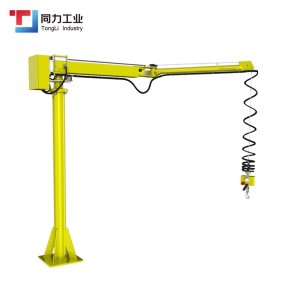The basic classification of balancing crane can be roughly divided into three categories, the first is mechanical balancing crane, which is the most common type of balancing crane, that is, using the motor to drive the screw to rise to lift the goods; the second is pneumatic balancing crane, which mainly uses the air source to suck up the goods, so as to achieve lifting. The third type is the hydraulic counterbalance crane, which is generally used for lifting heavy goods.
The counter balance crane with its "balance of gravity" makes the movement smooth, effortless and simple, and is especially suitable for the post process of frequent handling and assembly, which can greatly reduce labor intensity and improve work efficiency.
It is mainly used in mechanical plants, transportation, petrochemical, and other light industry sectors, and has excellent performance in the loading and unloading of machine tools, assembly lines, processing lines, loading and unloading of finished products, sand boxes, and warehouse items.
Three major advantages of balance crane.
1. Good operation intuitiveness. The arm part of the counterbalance crane is designed according to the principle of balance with the encounter, and at the same time, the weight of the object at the hook (lifting weight) does not destroy this balance state. Only a small rolling friction resistance needs to be overcome when moving.
2. Smooth operation. Because of its rigid arm, the lifted object will not swing as easily as a crane or electric hoist in the process of moving.
3. Easy to operate. The user only needs to hold the object by hand and press the electric button or turn the handle to make the object move in the three-dimensional space according to the orientation and speed required by the operator (variable speed counterbalance crane). The gravity-free type balance crane has the ability to control the speed of moving objects according to the operator's will and the feeling of the hand.
Post time: Dec-28-2021


